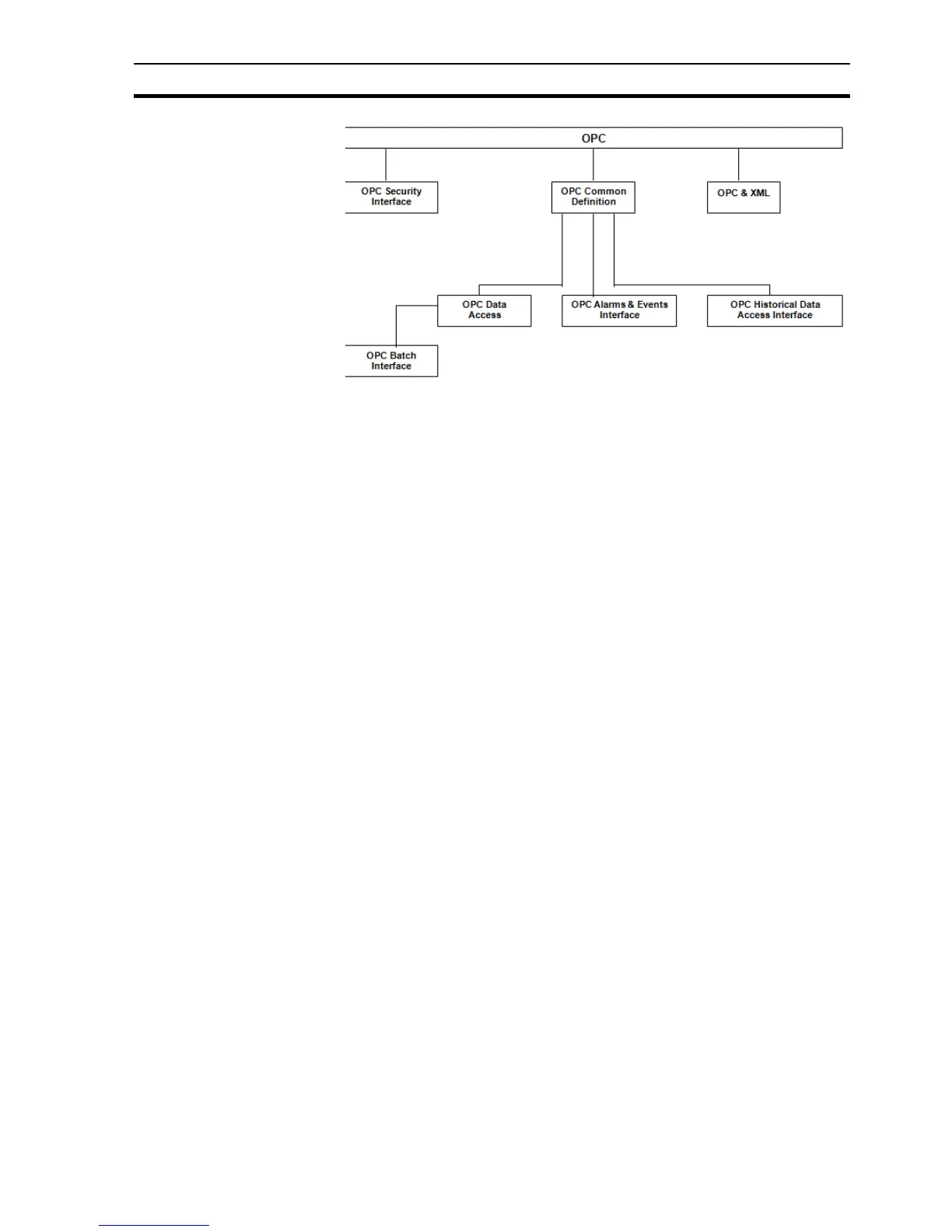An Overview of OPC SECTION 17 Using CX-Supervisor as an OPC Client
245
Figure 1: OPC Interface Specifications
17-1-3 Key Technologies used by OPC
This section provides, for convenience, a brief introduction to some key
technologies that are used by, or that form part of, OPC. Some of these are
described in more detail in the appendices; plentiful reference books are
available elsewhere describing all of them in any required level of detail.
17-1-3-1 A Brief Introduction to DCOM
Microsoft describes DCOM as:
"The Distributed Component Object Model (DCOM) is a protocol that
enables software components to communicate directly over a network in
a reliable, secure, and efficient manner. Previously called "Network OLE,"
DCOM is designed for use across multiple network transports, including
Internet protocols such as HTTP. DCOM is based on the Open Software
Foundation's DCE-RPC spec and will work with both Java applets and
ActiveX® components through its use of the Component Object Model
(COM)."
In other words, DCOM is an object-programming model for the implementation
of distributed applications using a client server pattern. A client can use
several servers at the same time and a server can provide functionality to
multiple clients simultaneously.
Translating that into plainer English, COM basically allows software
components to be written in such a way that they can be used by all COM-
aware applications (e.g. C++, later versions of Visual Basic) without those
applications needing to know anything about the "internals" of the object.
DCOM is simply the distributed version of COM - i.e. the objects can be
spread across a network. It is a very powerful system, although some
machine-level and security configuration may be required to allow it to work
correctly and reliably.
Central to the capability of a DCOM object are its interfaces. All
communication with a DCOM object occurs through its interfaces - an
interface is said to provide a "contract" (a full and unchanging description) for
the functionality provided by that object. Each interface has a unique ID and
describes a group of related methods. The description of the interface defines
the syntax and the semantics of the services provided by that interface - the
internal implementation of those services doesn't matter to the calling
applications.
